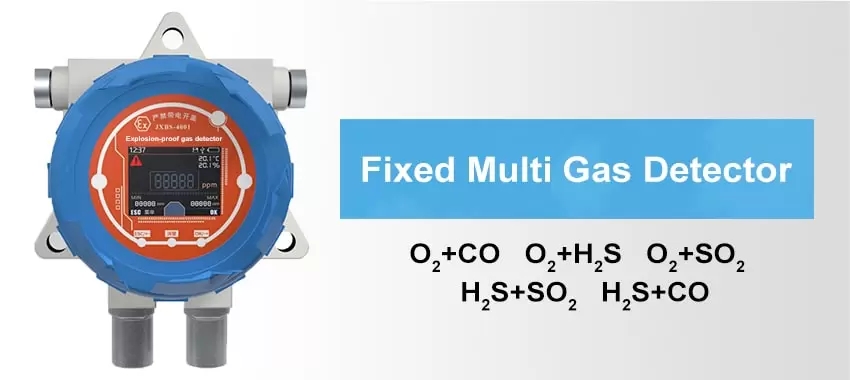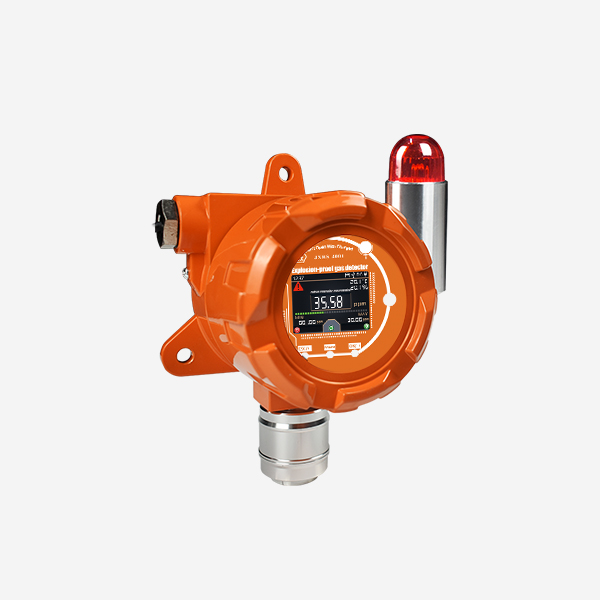A multi gas detector is a versatile device designed to detect and monitor the presence of various gases simultaneously in different environments. These detectors are crucial tools in industries where workers are exposed to potentially hazardous gases. This article delves into the significance of multi gas detectors, their features, and how they ensure safety by providing comprehensive gas monitoring capabilities.
Understanding Multi Gas Detectors

A multi-gas detector is an iot device capable of measuring and monitoring multiple gas concentrations simultaneously. They are commonly used in industries such as oil and gas, mining, manufacturing, and construction, where workers are at risk of exposure to a variety of gases, including combustible, oxygen-deficient, and toxic gases.
Features and Functioning of Multi Gas Detectors
Multi gas detectors offer a range of features that enhance their functionality:

Gas Sensors:
These detectors are equipped with different types of sensors, such as catalytic bead sensors for combustible gases, electrochemical sensors for toxic gases, and infrared sensors for CO2. Each sensor is designed to detect and measure specific gases accurately.
Display and Alarms:
Multi gas detectors have clear and easy-to-read displays that provide real-time gas concentration readings for each gas detected. They also feature audible and visual alarms that activate when gas levels exceed pre-set thresholds, ensuring immediate warnings for potential dangers.
Data Logging and Connectivity:
Some multi gas detectors have built-in data logging capabilities, allowing users to capture and store gas measurements over a period of time. Additionally, advanced models may offer wireless connectivity, enabling remote monitoring and data sharing.
Benefits of Multi Gas Detectors
Multi gas detectors play a crucial role in ensuring safety in hazardous environments:
Comprehensive Gas Monitoring: By simultaneously detecting multiple gases, these detectors provide comprehensive monitoring capabilities, offering protection against a wider range of potential hazards. This minimizes the need for multiple individual detectors and simplifies gas detection protocols.
Early Warning Systems:
The real-time gas concentration readings and alarm systems in multi gas detectors provide early warning signs to workers, enabling them to take immediate action, evacuate if necessary, and prevent accidents or injuries due to gas exposure.
Worker Safety:
By continuously monitoring gases, multi gas detectors safeguard workers’ health and well-being in potentially hazardous environments. These detectors enable employers to comply with regulatory standards and ensure a safe workplace.
Efficient and Cost-Effective:
Utilizing a multi gas detector reduces the need for separate detectors for each gas and simplifies maintenance procedures. This not only saves costs but also streamlines operations by minimizing equipment requirements and training needs.
Applications and Conclusion
Multi gas detectors find extensive applications in various industries and settings:
Industrial Workplaces: They are essential in industries such as oil and gas, mining, manufacturing, and chemical plants where workers are exposed to multiple gases.
Emergency Responders: Multi gas detectors are utilized by firefighters, hazmat teams, and other emergency responders to assess gas levels at accident sites or during rescue operations.
Confined Space Entry: These detectors are crucial for safe entry into confined spaces, such as storage tanks, vessels, and underground tunnels, where gas accumulation can be fatal.
In conclusion, multi gas detectors provide comprehensive gas monitoring capabilities, ensuring worker safety and minimizing the risks associated with various gases. Their advanced sensors, alarms, and data logging features enable real-time detection, prompt warnings, and efficient management of gas-related hazards. By investing in multi gas detectors, industries and organizations can prioritize safety, comply with regulations, and create a secure environment for their workers.
